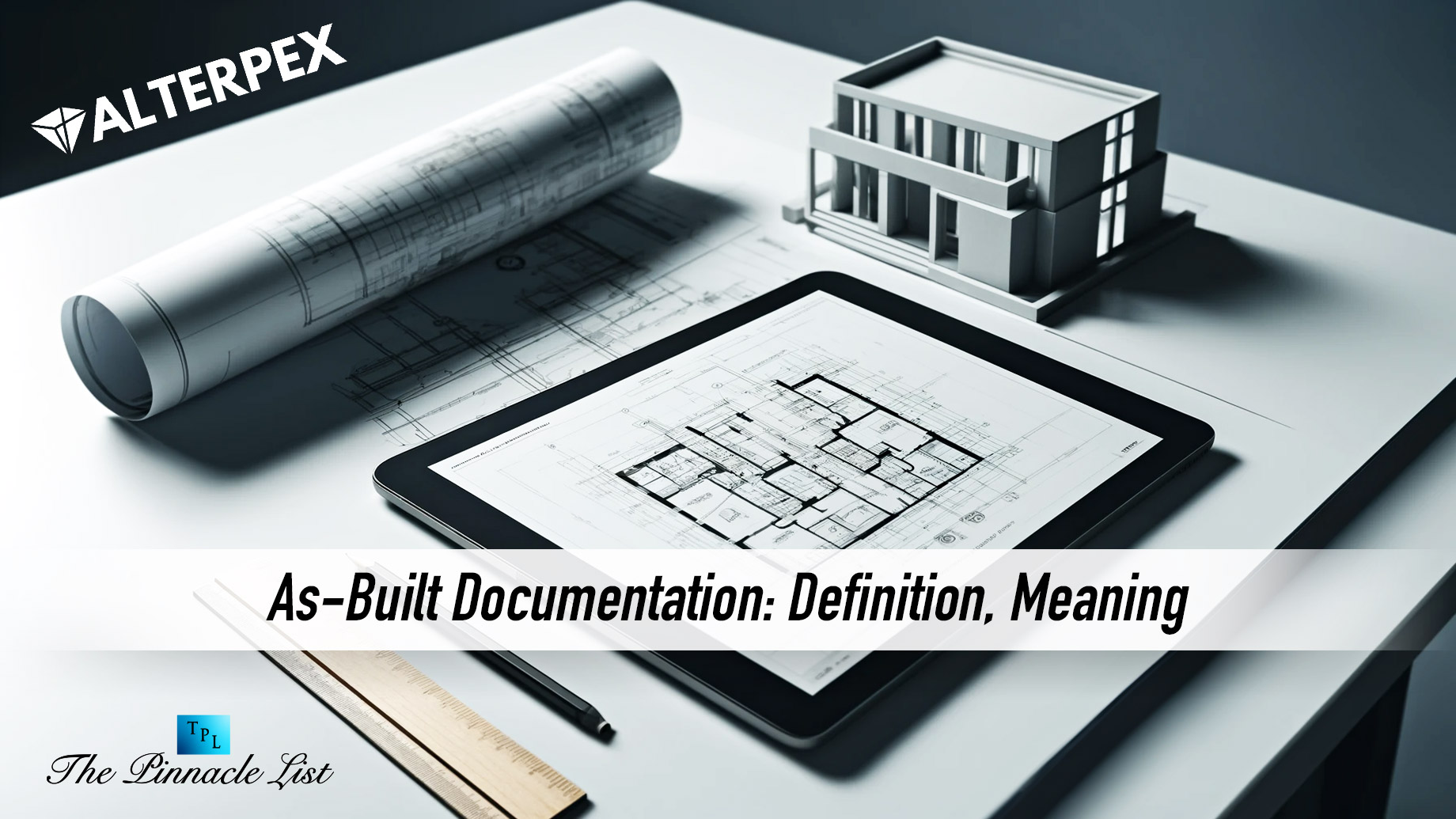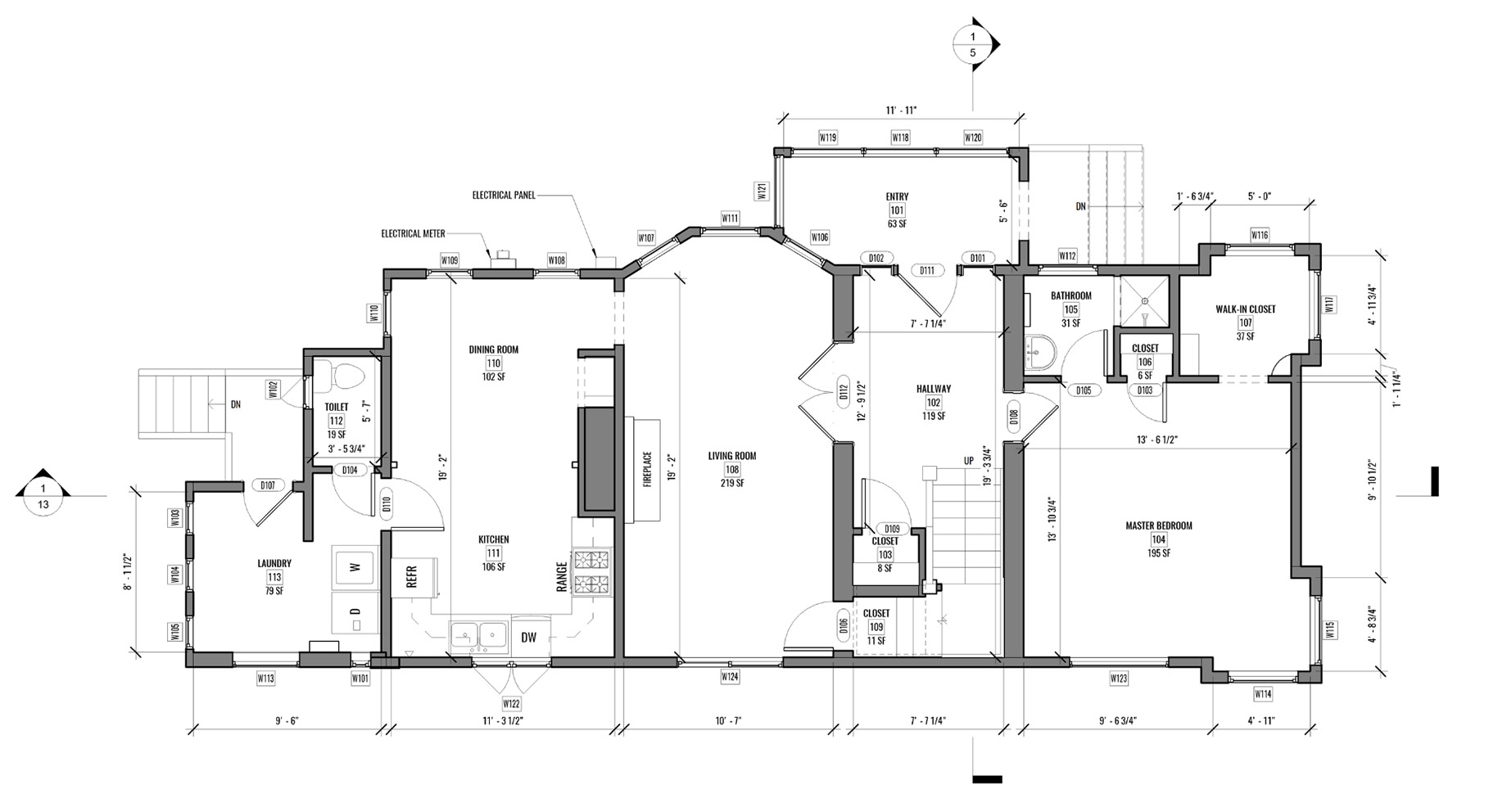
Did you know that up to 60% of construction projects experience discrepancies between initial plans and the final structure? This is where “as-built documentation” steps in to save the day. By understanding how this crucial documentation captures the reality of a completed project, you can avoid costly errors, delays, and rework. In this article, Yuriy Alex Kulchitsky, Head of VDC Services at BIM Services Company Alterpex, will discuss how harnessing accurate as-built documentation can streamline processes, enhance communication among trades, and ensure project outcomes align with expectations.
Looking for professional as-built measuring services? Contact us at Alterpex.

Defining As-Built Documentation
Purpose
As-built documentation refers to the final set of drawings and documents that reflect the actual conditions of a project after construction completion or right before the beginning of renovations. It serves as a record of the project’s actual state, capturing any changes made during the construction process.
Creating as-built documentation is crucial for several reasons. Firstly, it provides an accurate representation of how the project was executed with all the changes and alterations. This documentation helps identify any deviations from the original design, ensuring transparency and accountability in the construction process.
Components
The as-built documentation typically includes detailed information such as detailed plans, specifications, and material schedules. These components are essential for future reference and maintenance purposes. Photographs may be included to visually document the final state of the project. The set of plans may be enforced by a 3D model that helps to read the drawings to the professionals and homeowners too.
One key aspect of as-built documentation is recording any modifications or variations made during construction. This ensures that all changes are documented and can be referred to in case of future renovations or repairs. Stakeholders will have a clear understanding of the history of the project and can make informed decisions for the future.
Importance of Accurate Documentation
Ensuring Compliance
Accurate documentation in construction projects is crucial for compliance with regulations. It provides a detailed record of the project’s development, ensuring that all work meets the required standards.
Accurate representation can prevent costly mistakes by highlighting any deviations from the original plans. For instance, if a contractor overlooks a critical detail during construction, it could lead to non-compliance issues that may require expensive corrections. By having detailed reports, construction teams can address any discrepancies promptly, maintaining compliance throughout the project.
Impact on Timelines and Budgets
The impact of accurate documentation on project timelines and budgets cannot be overstated. When everything is documented correctly, it helps streamline processes and prevents delays caused by misunderstandings or errors. For example, having accurate schedules and plans helps in ordering the correct amount and types of windows and doors for the renovation, the same applies to roof replacement or any other updates.
On the other hand, a lack of accurate documentation can lead to significant setbacks, overordering, waste, etc. Imagine a scenario where incomplete or inaccurate records force construction teams to spend extra time trying to figure out what was done previously. This not only delays the project but also increases costs due to additional labor and material expenses.
Quality Assurance and Project Success
Accurate documentation acts as a roadmap for future maintenance and renovations, ensuring that all details are captured for reference. It plays a vital role in quality assurance by providing a clear picture of the work completed. With precise documentation in place, stakeholders can assess the project’s success based on factual information rather than assumptions.
Moreover, accurate documentation supports effective communication among team members and stakeholders. By having access to comprehensive reports detailing every aspect of the project, decisions can be made swiftly based on reliable data rather than guesswork or incomplete information.
Implications of Inaccurate As-Builts
Rework Consequences
Inaccurate as-builts can lead to significant rework, causing delays and budget overruns in construction projects. When the documentation does not match the actual conditions, contractors may have to redo work, impacting project timelines.
Key Points:
- Delays in project completion
- Increased labor costs
- Disruption of workflow
Safety Hazards
Reliance on inaccurate as-builts poses safety risks. Misleading information can result in workers unknowingly engaging in hazardous activities due to incorrect layouts or missing critical details.
Financial Ramifications
Using inaccurate documentation can have severe financial implications, leading to unexpected expenses and legal issues. Incorrect data can cause errors in cost estimates, resulting in budget discrepancies and disputes.
Key Points:
- Budget overruns
- Contractual disputes
- Loss of credibility with clients
Who Needs As-Built Documentation
Building Owners
Building owners are primary stakeholders requiring access to as-built documentation. This crucial information provides them with accurate records of the final constructed building, aiding in maintenance and renovation projects.
Accurate as-built documentation ensures that building owners have a comprehensive understanding of their property’s infrastructure. By having access to detailed plans and specifications, they can effectively plan for upgrades, repairs, and expansions.
Contractors and Engineers
Contractors and engineers also benefit significantly from utilizing precise as-built documentation. It serves as a valuable reference during construction projects, enabling them to identify potential conflicts with existing structures and utilities.
With access to up-to-date as-built documentation, contractors can streamline the construction process by avoiding costly errors and delays. Engineers rely on this information to design efficient systems that align seamlessly with the building’s existing layout.
Creative Teams
As-builts are widely used by Real Estate agents, brokers, and investors, as well as by code compliance agents to review the properties, make roadmaps for future steps, and advertise the properties. It is always helpful when supported by photographs or renderings.
The Process of Generating As-Built Documentation
Data Collection
As part of the process of generating as-built documentation, data collection is the initial step. Surveyors and field engineers gather information on the actual physical conditions of a construction project.
The collected data includes measurements, laser scanning, materials data collection, equipment installed, photos, etc. This detailed information forms the foundation for accurate as-built drawings.
Documentation Creation
Once the data is collected, professionals create accurate and detailed as-built drawings. These drawings depict the as-is state of the project with all the details and specifications.
Using specialized software like Computer-Aided Design (CAD), professionals meticulously document all aspects of the project. This ensures that future maintenance or renovations can be carried out efficiently with precise reference to the as-built documentation.
Verification Process
After creating the initial as-built drawings, a crucial step involves verification. Professionals compare the newly created documentation with the original design plans to identify any discrepancies or deviations.
This verification process ensures that the as-built documentation accurately represents the physical reality of the constructed project. Any inconsistencies are corrected to maintain the integrity and reliability of the documentation.
Collaboration and Review
Collaboration plays a vital role in ensuring the accuracy and completeness of as-built documentation. Engineers, architects, contractors, and other stakeholders work together to review and verify all details captured in the documentation before starting the renovation.
Through collaborative efforts, potential errors or omissions are identified and rectified promptly. This iterative review process guarantees that the final as-built documentation aligns precisely with the constructed project’s physical attributes.
Key Takeaways
- Accurate Documentation Matters: Ensure that your documentation is precise and up-to-date to avoid costly errors and improve operational efficiency.
- Utilize Modern Documentation Processes: Embrace digital tools and technologies to streamline the creation and management of your as-built documentation.
- Benefit Stakeholders with As-Built Data: Share detailed and accurate documentation with stakeholders to enhance decision-making and project outcomes.
- Maintain Accuracy in As-Builts: Regularly verify and update your documentation to reflect any changes or modifications accurately.
- Relevance Across Industries: As-built documentation is crucial in various sectors, from construction to manufacturing, for ensuring compliance, safety, and quality assurance.
- Take Action Now: Start implementing robust documentation practices to reap the benefits of accurate and reliable as-built documentation.
You’ve learned about the importance of accurate as-built documentation and the repercussions of inaccuracies. From understanding the process to identifying who needs this documentation, you now grasp its significance in various industries. Precise as-builts are the backbone of any project, ensuring smooth operations and preventing costly errors down the road.
Whenever you encounter construction documents, appreciate their value and strive for accuracy. Your attention to detail can make all the difference in the success of a project.
